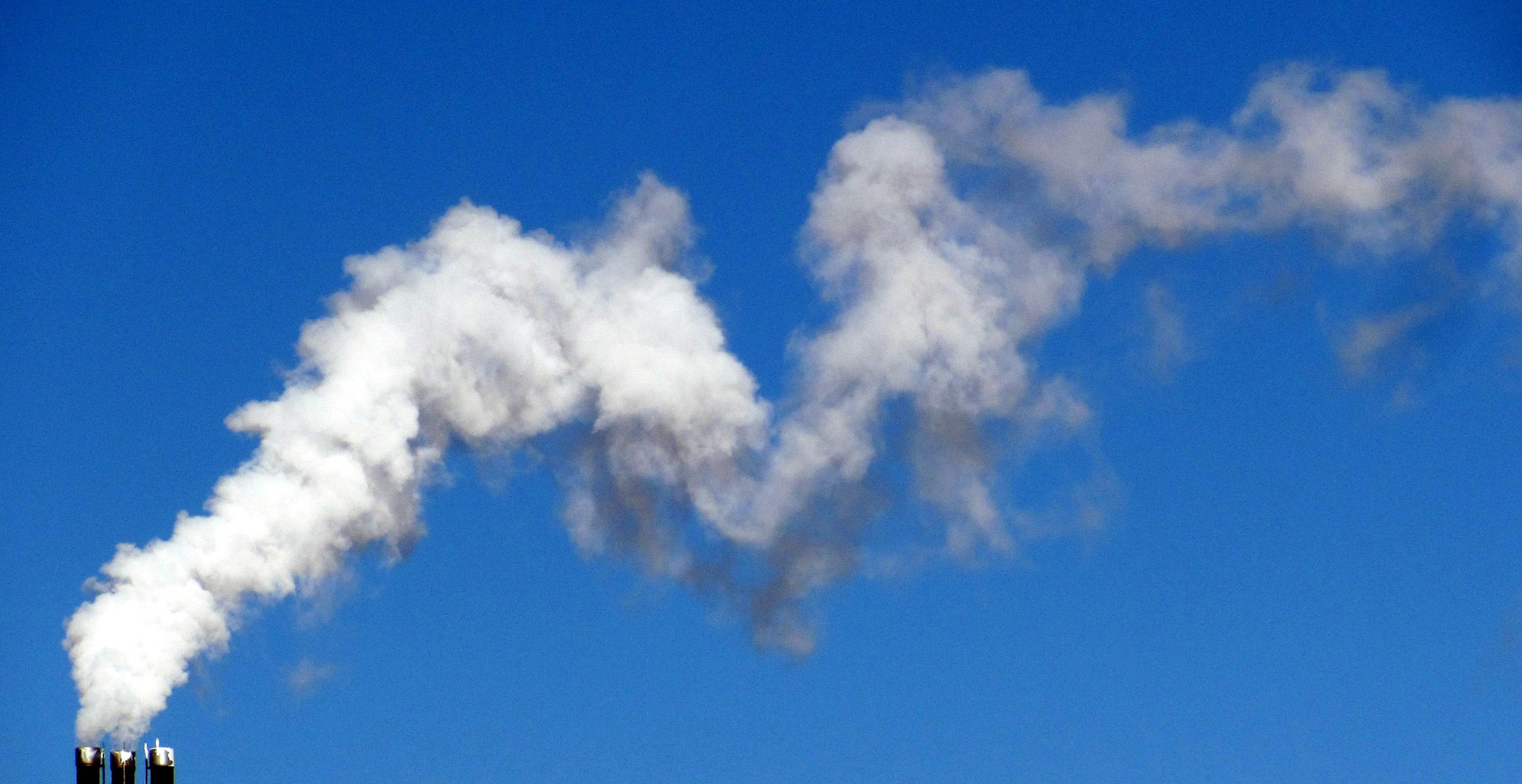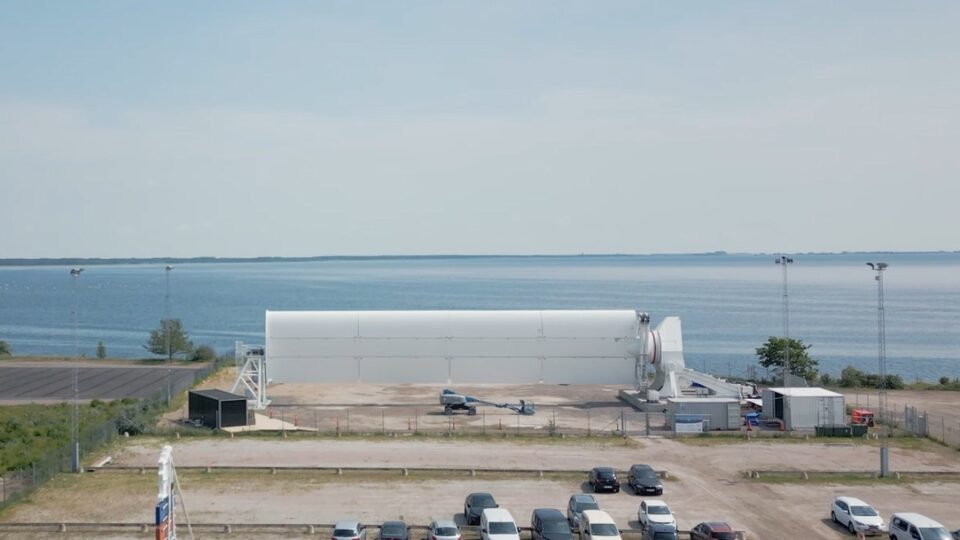It is a bold statement – that the Oceanbird concept could reduce 90% of the emissions compared to a conventional vessel. And we wouldn’t make it if we didn’t have the facts to back it up.
When the young aerospace professor Jakob Kuttenkeuler competed in sailing races, he created a simulation program to optimize his performance. 20 years later, that program would be laying the ground for the calculations showing that the Oceanbird concept could reduce emissions by 90%.
Wallenius has added pieces to the program, as well as SSPA, which mainly contributes with the hydrodynamic forces from hull, propeller, rudder, fins, and the aerodynamic forces from the wings.
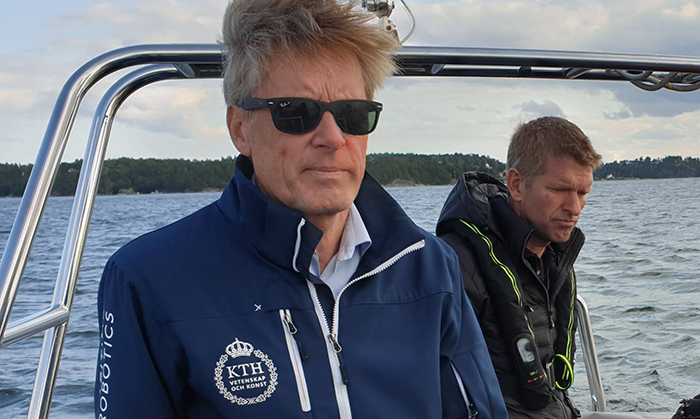
How does it work?
The procedure is in principle quite straight forward but advanced in the details. The Oceanbird team wants to know what happens with for example the emissions if the wings where bigger/smaller, if the speed increases/decreases, with less/more ballast water and so on. Jakob Kuttenkeuler, nowadays a professor at KTH Centre of Naval Architecture, puts these parameters in the program.
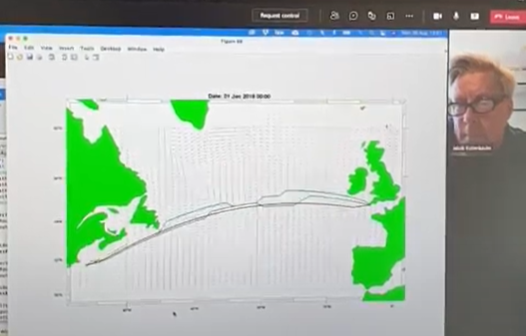
He selects the departure and arrival destinations, normally Southampton-New York but also across the Pacific, and add historic weather conditions. The computer program then optimizes the sailing route according to the authentic weather conditions. The virtual vessel sets off on a round-trip twice a month for a decade, thus crossing the sea 480 times. After that, there is a lot of data to transform into statistics.
“The devil is in the details and during this last year the simulations got much more detailed”, says Jakob Kuttenkeuler.
Data meets a captain’s experience
The program chooses the optimal route to get to the destination using the wind as effective as possible. This will also be a vital component in real life, the optimal routing is actually as vital as any other component of the fine-tuned ship system.
“There is a danger in trusting the computer simulations too much. The computer loves hard weather to sail fast, whereas the captain onboard might not be equally enthusiastic about going through passages with winds up to 20 meters per second and waves reaching seven meters. That’s why it’s so great that we have one of Wallenius’ Captains in the project: Ulf Deutgen. Ulf contributes with so much experience that is valuable for making this work in real life.”
Three equations
The foundation of the simulations are basically three equations of equilibrium working in harmony. One is related to the thrust: the forces that makes the vessel go forward (the wings and sometimes engine) needs to be equal to the forces slowing it down (the sum of the resistance components, mainly from the hull).
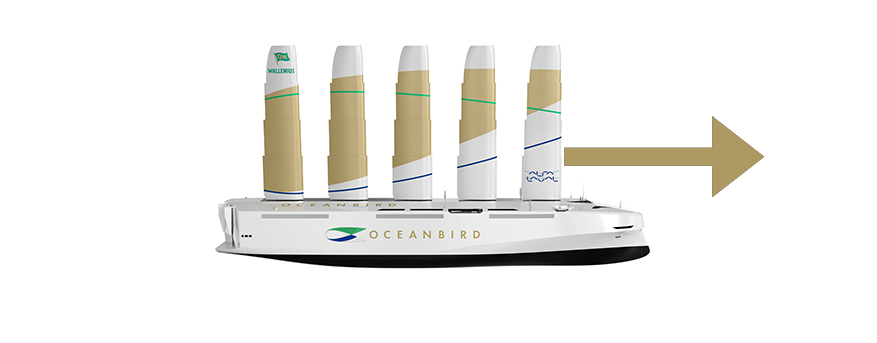
Second is sideways equation. The vessel will not go straight forward like a conventional cargo vessel but slightly on the side like any other sailing boat (this is often referred to as leeway).
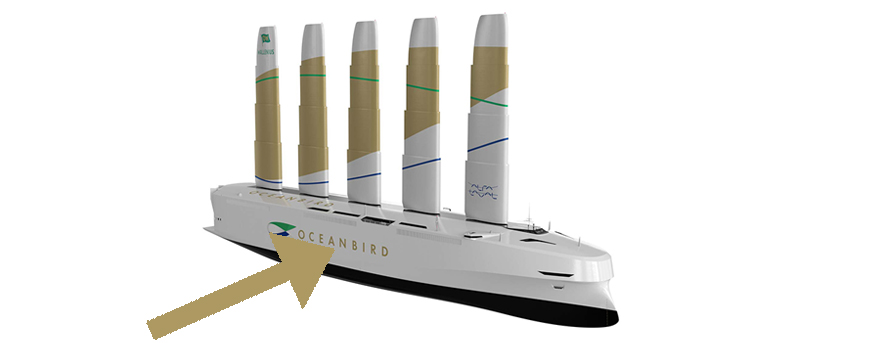
Third equation is coming from the wind, pushing the wings high above water, the heeling equation.
“That was one thing that surprised me. Before we did the simulations, I thought the vessel, being the world’s highest sailing vessel, would heel a lot more and I was worried about the cargo and the amount of ballast water needed to maintain stability. But the specially designed hull stabilizes the vessel, so it won’t tilt more than maximum 5 degrees even without ballast. With ballast you won´t notice it onboard!”

SSPA maps uncertainties
To verify the calculations, both KTH and SSPA have made extensive model testing in water tanks and open water. SSPA are also working on a scientific report to map uncertainties in the entire simulation chain. When the report is published in the end of 2021, it will be public and available for anyone to read.
“The transparency is one of the things that are so great about this project. Scientists and students in the project have already published a lot of interesting reports, and more will come” says Sofia Werner, Manager Strategic Research Hydrodynamics at SSPA.
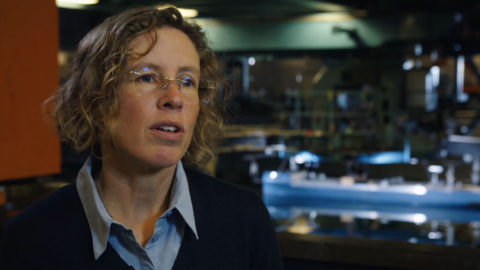
Facts
Wallenius, KTH and SSPA have been partners during the development project, which is supported by the Swedish Transport Administration. The development project, called wPCC, started in 2019 and ends during 2022. In September 2020, the collaboration presented the Oceanbird concept.
